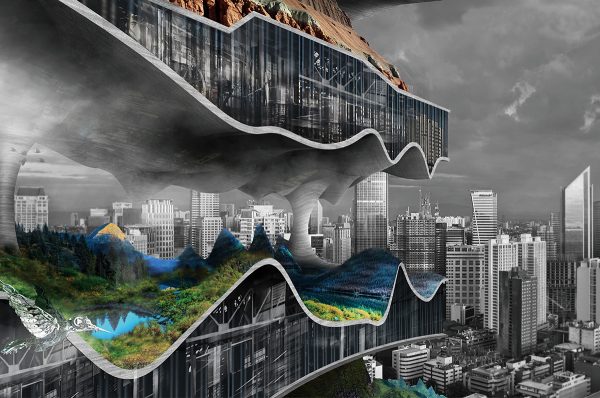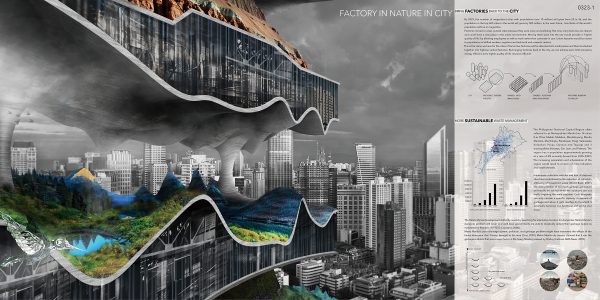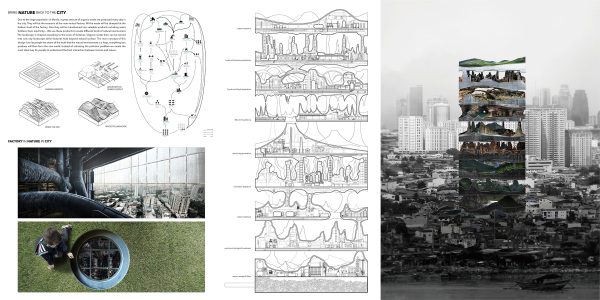Second Place
2017 Skyscraper Competition
Tianshu Liu, Linshen Xie
United States
Bring factories to the city
By 2025, the number of megacities, cities with a population over 10 million people, will grow from 23 to 36, and the population in the top 600 cities in the world will grow by 500 million. In the near future, two-thirds of the world’s population will live in these megacities.
Factories moved to areas outside cities because they were noisy and polluting. But now, many factories are cleaner and could have a new place in the urban environment. Moving them back into the city would provide a higher quality of life, by allowing employees to walk to work rather than commute in cars. Urban factories would be closer to populations of skilled workers, suppliers and technical and research centers.
This is the vision we have for the cities of tomorrow: factories will be dissolved into small pieces and then be stacked together into high-rise vertical factories. By bringing factories back to the city, we can achieve zero CO2 emissions, be energy efficient, and provide higher quality of life to the inhabitants.
Sustainable waste management.
The Philippines’ National Capital Region, Metropolitan Manila, has 14 cities (Las Piñas, Makati, Malabon, Mandaluyong, Manila, Marikina, Muntinlupa, Parañaque, Pasig, Valenzuela, Kalookan, Pasay, Quezon and Taguig) and 3 municipalities (Navotas, San Juan, and Pateros). The region has a population approximately growing at a rate of 4% annually; the increasing population and urbanization of the region results in the creation of more industries and establishments.
Inadequate collection vehicles and lack of disposal sites have contributed to the reduction of waste collection efficiency. The main problem of too much garbage generation will hardly be solved when the solutions are not really targeting the main problem. Each dumpsite can only contain a specific capacity or amount of garbage and when it gets reaches its threshold it eventually becomes non-functional and will be shut down. The Metro Manila Development Authority reacts by searching for alternative location for dumpsites. Metro Manila’s dumpsite problem will never end until local governments are able to drastically reduce their garbage output as mandated by Republic Act 9003.
Metro Manila’s poor drainage system, pollution, and garbage problem might have worsened the effects of the heavy downpour that ‘Ondoy’ brought to the area. Metro Manila city mayors claimed that it was the garbage problem that was a major factor in the heavy flooding caused by Ondoy (Calonzo GMA News, 2009).
Bring nature back to the city
Due to the large population in Manila, a great amount of organic waste is produced daily. This waste will be the resource of the new vertical factory. All the waste will be dumped at the bottom level of the factory, and then they will be transformed into valuable products including water, fertilizer, heat, and electricity. We use these products to create different kinds of natural environment. The landscape is shaped according to the scale and shape of factories. Organic waste then can be turned into new city landscape while factories hide beyond natural surfaces. The main concept of this design is to let people be aware of the truth that the natural environment is a loop, everything you produce will then form the new world. Instead of criticizing the pollution problem we create the most ideal way for people to understand the best interaction between human and nature.
















